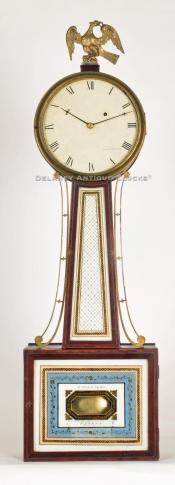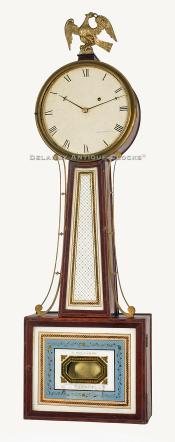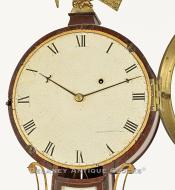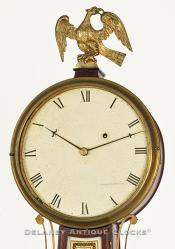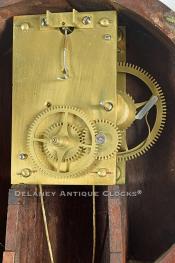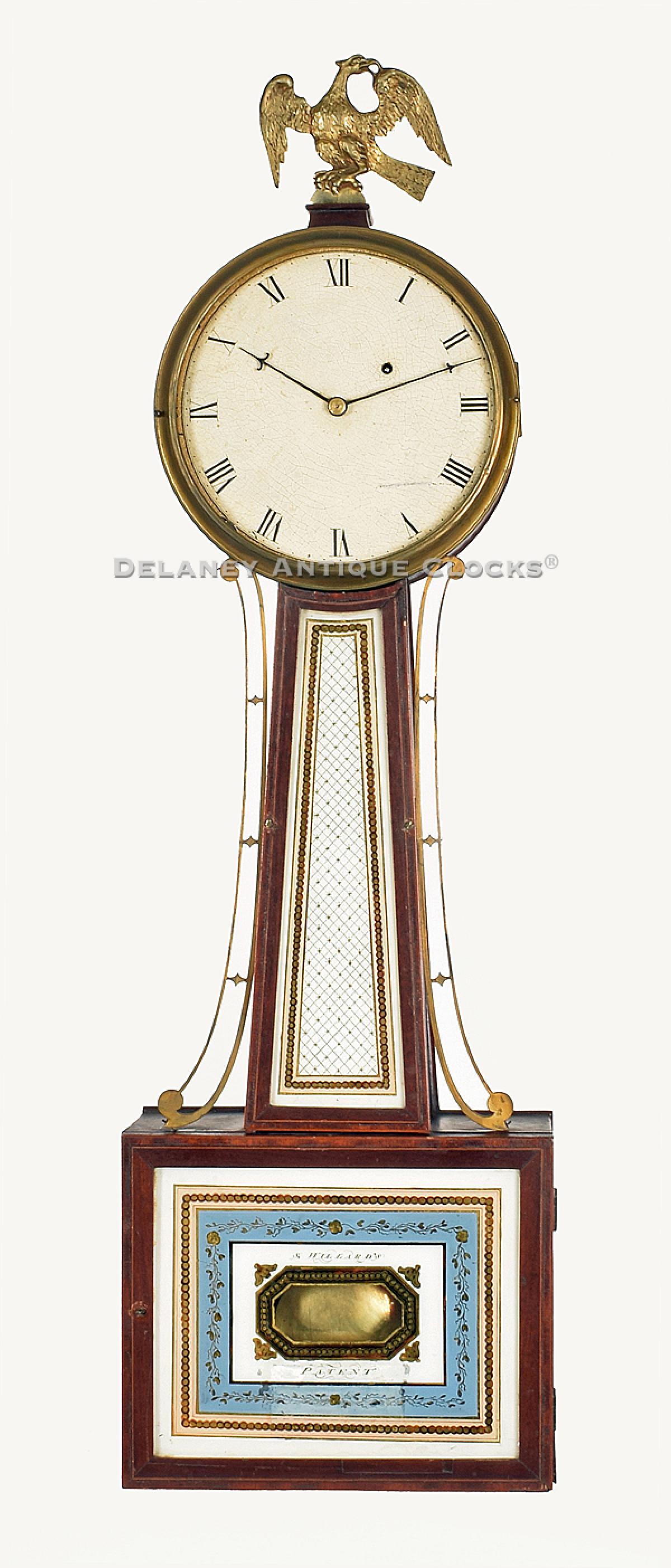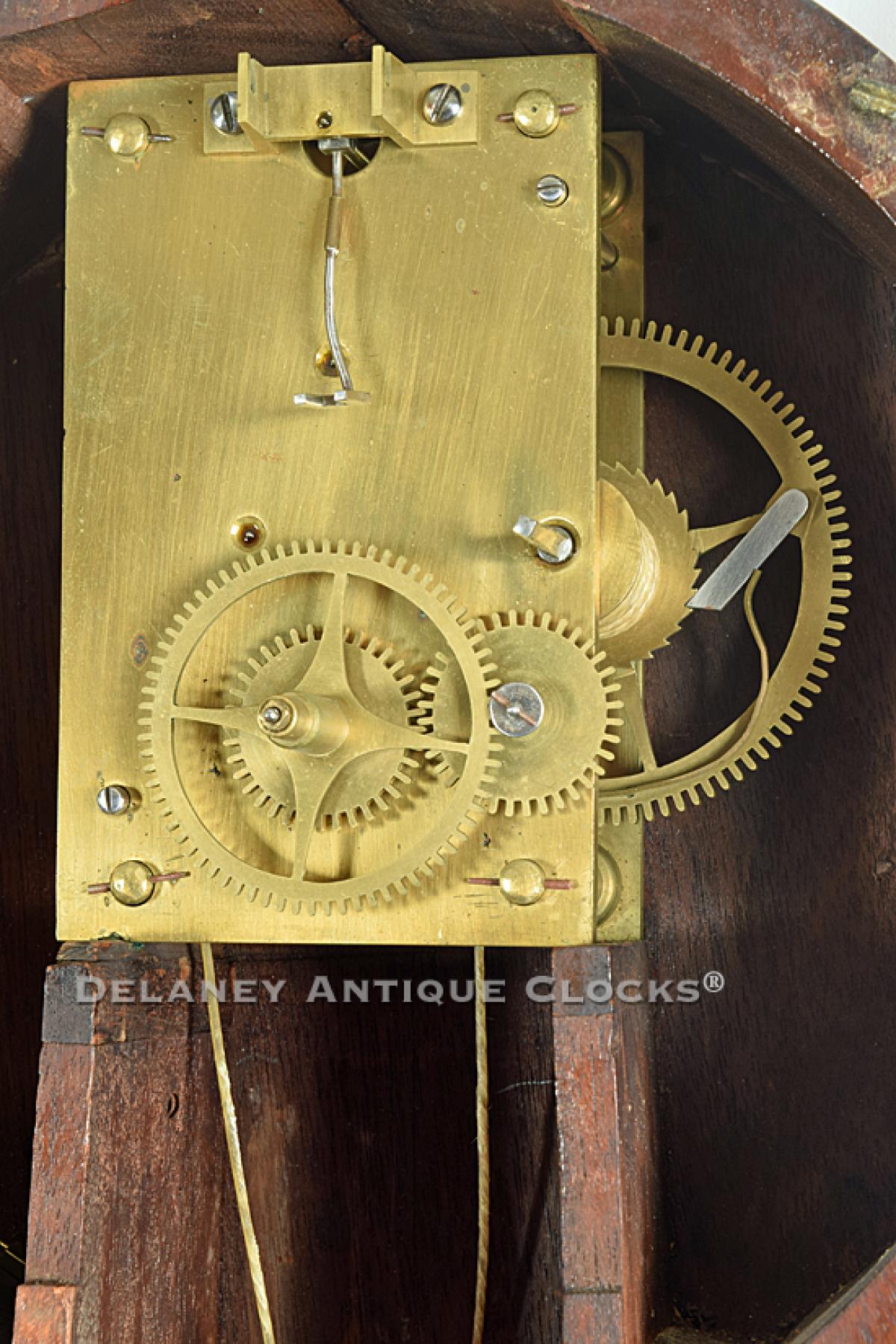Simon Willard's Patent Timepiece. A true Willard banjo clock. AAA-22.
This is a wonderful opportunity to purchase a genuine Simon Willard timepiece. This is a very attractive Federal Massachusetts Timepiece or "Banjo clock," representing the first generation of this innovative form. This compact, reliable, and accurate eight-day timekeeper is designed to hang on the wall. The timepiece was a revolutionary design and, in many ways, changed the business of clockmaking. Our country's most famous clockmaker, Simon Willard [1753-1858] of Roxbury, Massachusetts, made this outstanding example circa 1805. Willard patented this successful form in 1802 as the "Improved Timepiece." As a result of the U. S. Patent awarded on February 2nd, Willard had fourteen years, till 1816, to produce this form exclusively. President Thomas Jefferson signed this document. Examples like this, with cross-banded frames and understated geometric eglomisé panels, were made in Simon Willard's shops during his patent's first years. Although numerous fine examples we made by his apprentices over the next twenty-five years, these rare, early examples are the most prized.
This clock case is constructed in mahogany and retains an old-world finish that has been undisturbed for many decades. The case exhibits excellent early proportions and has become a recognizable form. The flat frames are cross-banded and decorated with line inlay. The throat frame is secured to the case of the side with two screws. Both frames are fitted with paint-decorated glass tablets. These eglomisé tablets are decorated in multiple colors. The white field suspends the predominant color of blue, pink, and various gilt designs. These designs are executed in a traditional geometric format. The lower panel is inscribed in gilt lettering, above and below the rectangular oculus, "S. Willard's / PATENT." Both tablets are original to this clock and are in excellent condition. The lower tablet has a small, slightly disturbed. This can be seen if you look very closely at the bottom of the tablet in the center. It appears that someone in the past may have pasted a business card to the back of the glass in this location. This area has been carefully restored. The robin's egg blue band is such a pretty color and adds to the overall beauty of this example. Brass side arms flank the throat section of the case. They are lightly formed and pinned to the case in three locations. The center pinning is through the center diamond spacer. The bezel is also cast in brass. This is fitted with glass and opens to access the painted iron dial. The enameled dial is decorated with a gilt ring painted around the perimeter. The time track is formatted with Roman-style hour numerals and dotted minutes. The hands are made of steel and are hand filed to a third dimension. These are considered the early form.
The time-only weight-driven movement is an eight-day brass construction design. It features a step train gearing with a deadbeat escapement. The teeth in the gear train are deeply cut. The wonderfully finished plates are oversized. The movement is mounted to the back of the case with the original through bolts. The pendulum hangs from a T-bridge suspension. The metal pendulum rod supports a brass-faced bob. That swings in front of the weight board.
A brass eagle finial, the design is fantastic and surmounts this case and is mounted on a mahogany chimney plinth.
This clock measures approximately 34.25 inches long. This clock is in fine original condition.
Inventory number AAA-22.
Simon Willard was born in Grafton, Massachusetts, on April 3, 1753. He was the seventh of twelve children born to Benjamin Willard (1716-1775) and Sarah (Brooks) Willard (1717-1775) of Grafton. While living in Grafton, Simon answered the Lexington alarm on April 19, 1775, along with his brothers. It is thought that by 1782 he moved from Grafton and took up residence in Roxbury as a Clockmaker. Simon became a Master Clockmaker as well as an inventor. He is well known for receiving patents for his roasting jack in 1782, his "Improved Timepiece" or Banjo clock in 1802, and an alarm clock patent. In addition, he trained many men to make clocks who became well-known Clockmakers once their apprenticeships were served. Some of them include the brothers Levi and Able Hutchins, Elnathan Taber, William Cummens, Ezekiel Jones and Daniel Munroe. Some of the more notable public clocks Simon built include the clock in the United States Capitol building's Statuary Hall. He also built a clock for the House of Representatives and the U. S. Senate. Simon died on August 30, 1848, at the age of 95.

